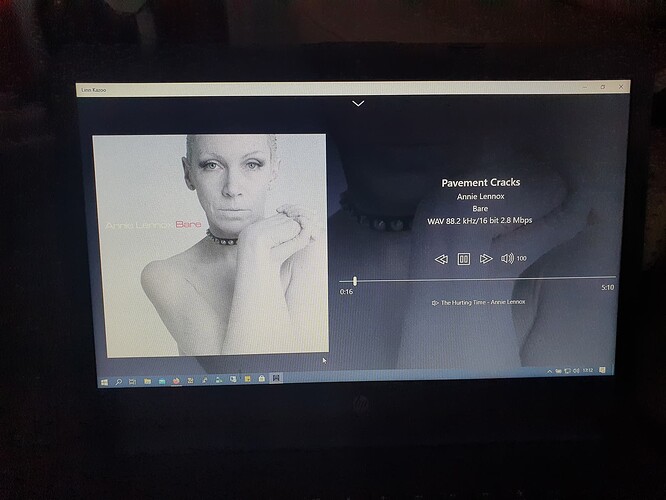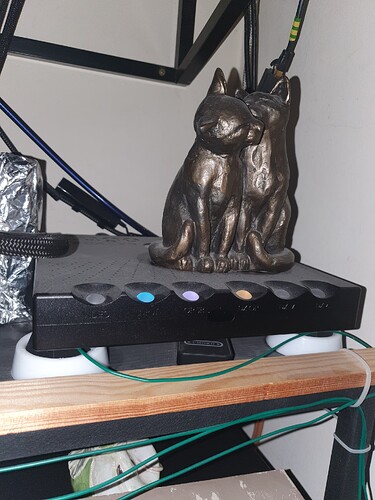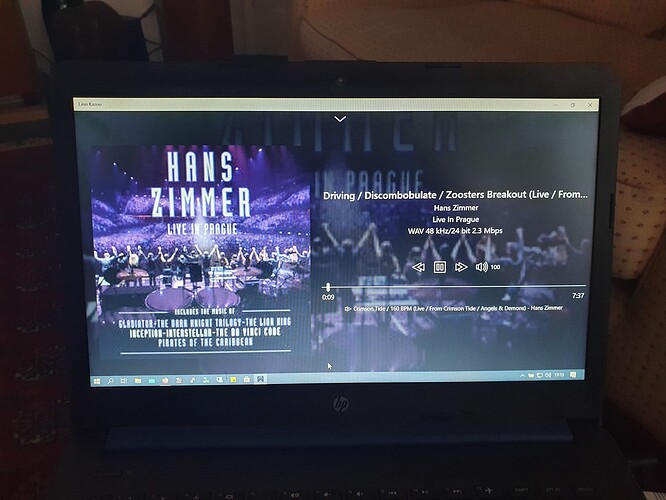Having bought myself a Tron 7 GT phono stage and being absolutely wowed by how marvelous my LP12 / Aro / Troika / 'Geddon sounds, even with ancient and far from silent vinyl, I have become disenchanted with my digital setup. But, was I getting the best from it?
dCS developed the dual AES output and wrote the standard, with which Chord have complied. Therefore, in theory, I should be able to connect the Network Bridge (NB) dual outputs to the Chord M-Scalar (MS) dual BNC inputs.
A quick trip onto eBay and I had bought:
- Two Van Damme 1m AES digital cables (no expense spared);
- Two neutrik 110 to 75 ohm impedance transformers (AES > BNC); and
- Two male bnc to female RCA gender benders.
This enabled me to use my current selection of spdif cables.
Having set up the physical hardware I fired up dCS Mosaic. This is a bit more complicated than it sounds as I partition my physical LAN from my wireless. This meant that I had to find an Android emulator from my Win 10 laptop that allowed network bridging = Nox.
Via Mosaic you can set the ‘Dual AES Sample Rate’, I selected 352.8K. I had set up a playlist which included 10cc Rubber Bullets (RB), from 10cc Greatest Hits CD Rip.
I listened to the playlist via my usual set up using NB spdif out to MS BNC 1. I had started using Mosaic as I think it sounds a tad better than Linn Kazoo, but I can’t think of a logical reason why, and so I am still playing with this.
RB was a tad too hot on certain plosives, as usual. But this was still much better controlled via the AQ Diamond spdif than any other cable I had heard.
With the dual AES set up I repeated my listening. It worked! But wait, the MS was indicating that the input was BNC1, not dual BNC, and the input it was seeing was 44.1K.
Now, I had made an assumption. That by selecting 352.8K in Mosaic that the NB would upscale the input stream. IT DOESN’T. As dCS support kindly explained to me, the selection you make determines the threshold at which Dual AES kicks in, and the minimum is 88.2. So, counter intuitively to me, 88.2 is the selection to make. IF the input is less than this sampling frequency then the NB out puts the native stream via BNC 1.
Having made the change on my playlist I had included two tracks from LPs I had ripped at 2496, these correctly were played via Dual AES.
A bit later I played Bat Out of Hell (BOOH) 2496 from Qobuz. It sounded perfectly reasonable. I then played one of my LP rips also at 2496. This sounded bloody good.
As the day was drawing to a close I realised I had enjoyed my digital session more than any I could recall for some time. Still no conclusions.
Day 2
Having cogitated I decided to try upscaling my CD quality rips to trigger Dual AES …if possible. My experience with upscaling is not favourable. I have found it to ameliorate plosives but also blunt detail and dynamics. But, nothing ventured etc.
I was aware that the version of Minimserver I am running was behind the curve, but I am a great believer in ‘if it ain’t broke’. Now I bit the bullet, upgraded the server, reinstalled Minimstreamer and Minim Watch. This is an aspect of digital audio that I am getting increasingly impatient with, but I understand why it is needed and improvements can be delivered, so it proved here.
I have to pay for Minimstreamer periodically, but the level of support and development makes this worthwhile for a pretty minimal cost. To date I have simply used Minimstreamer to transcode my flac to wav. Now I added an entry to additionally upscale 44.1K to 88.2K. Now I get permanent 88.2K.
I tested the 88.2 via my nearfield system using Linn Kazoo. When I went back to my main system and played via Mosaic using the playlist I had set up the day before Mosaic reported 44.1!! I checked the M-Scaler (MS), IT was seeing 44.1?? I went direct to the album via Mosaic, 88.2 and Dual AES …weird.
I am also going to look at upscaling the 44.1 music from Qobuz via Bubbleupnp.
Time for some more listening. Ultimately will this prove just an interesting distraction, more difference than improvement? Good question.
M



